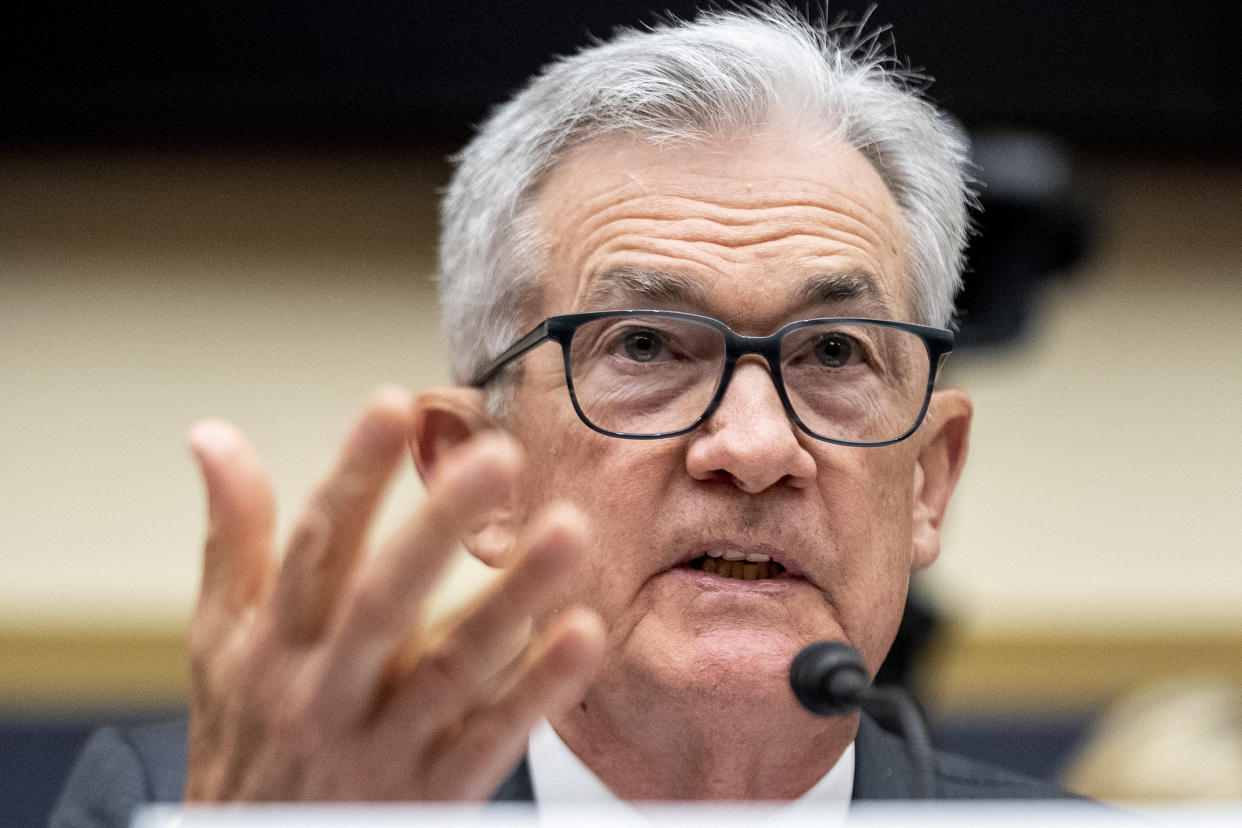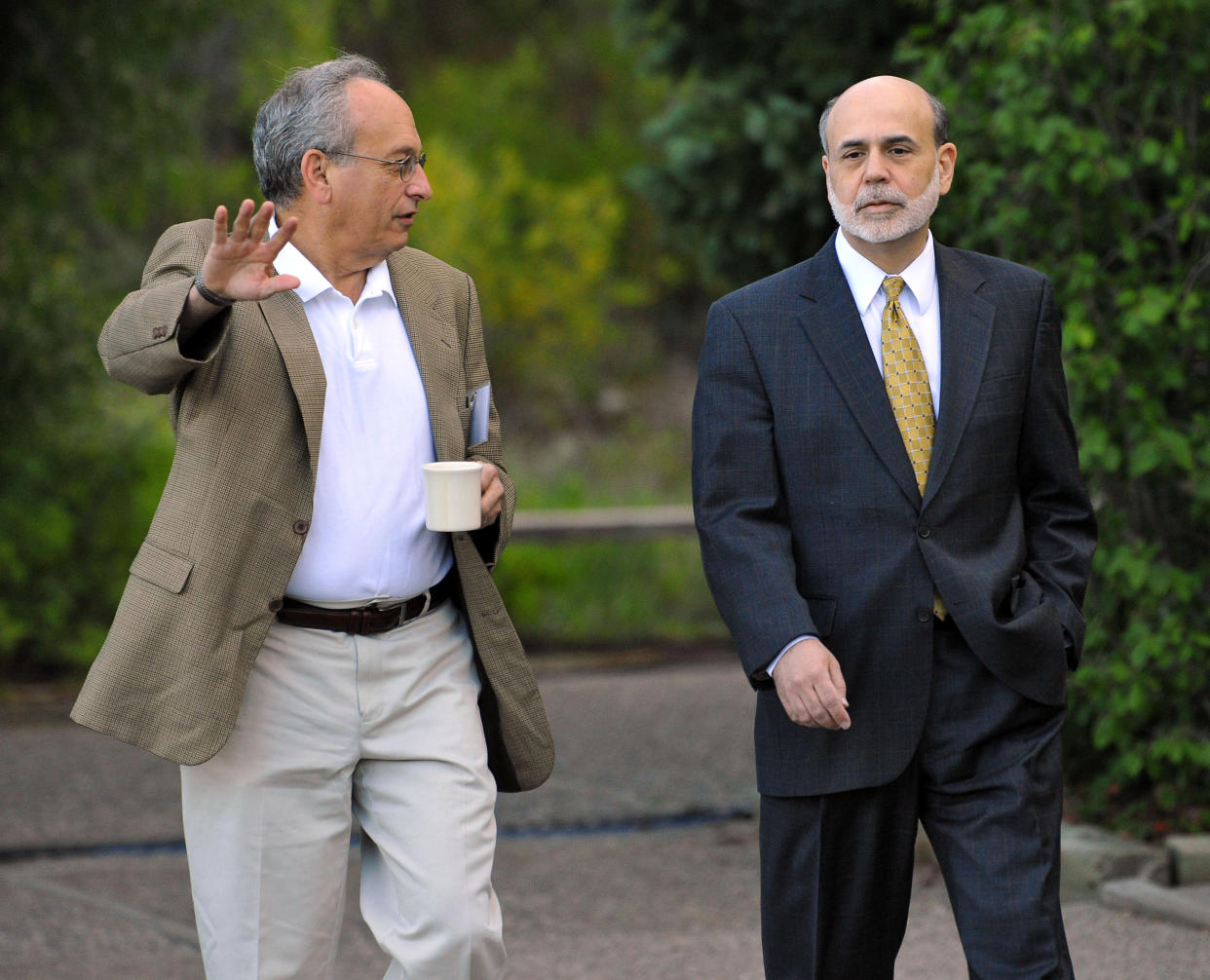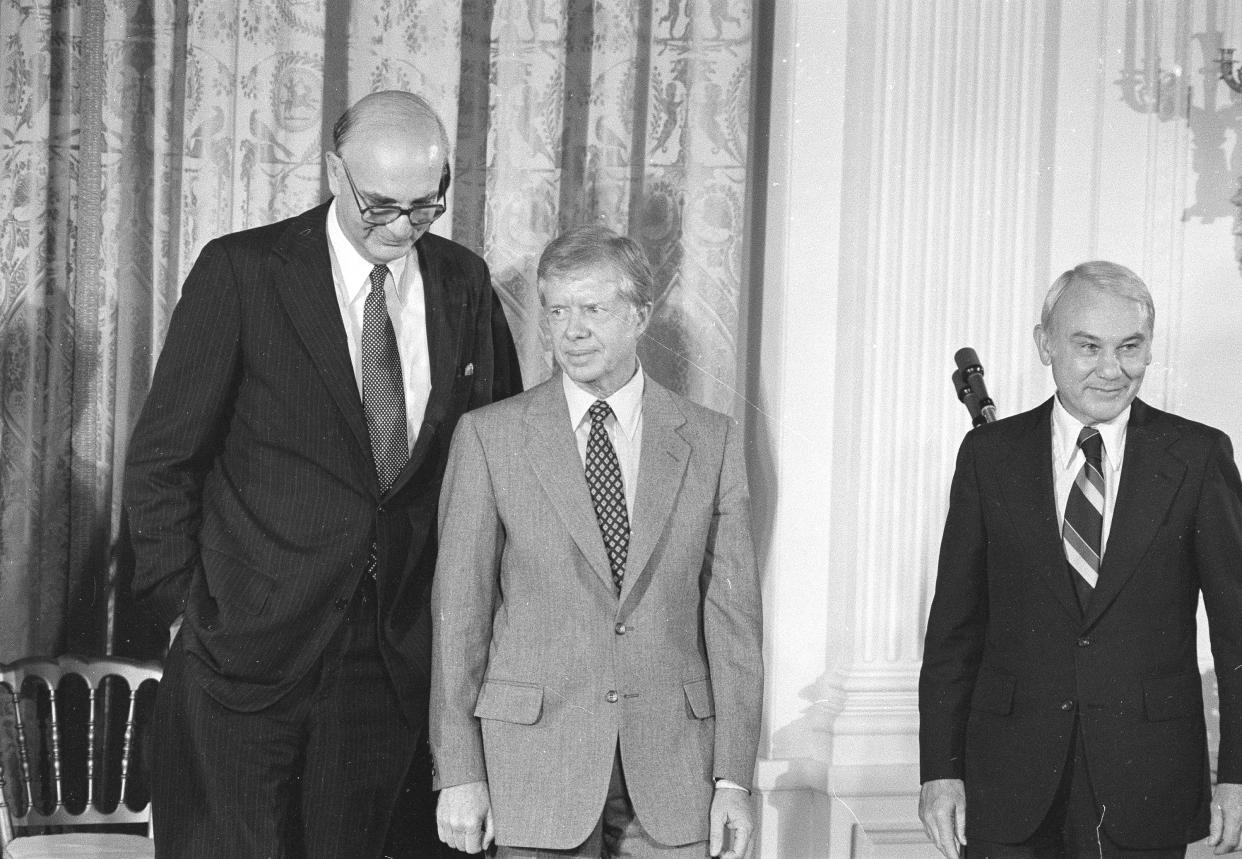All eyes on Powell as Fed chair prepares for big speech in Jackson Hole
When Federal Reserve officials gather later this week for the central bank’s annual economic symposium in Jackson Hole, Wyo., the investment world will be listening to how Fed Chair Jerome Powell frames the fight against inflation.
The question Powell and other Fed officials face is whether inflation's downward trajectory is convincing enough to take a more measured pace with interest rate hikes, or whether a more aggressive approach is warranted.
Last August, Powell sent the markets plunging after vowing in a shorter-than-typical speech to do what it takes to get inflation back to the central bank’s 2% target, warning higher rates could bring pain and higher unemployment.
"We will keep at it until we are confident the job is done," he said a year ago.
This year Powell, who delivers a new speech this Friday, walks in with the belief that there’s a pathway to be able to achieve lower inflation without seeing steep job losses.

He’s got a resilient economy, a still-strong job market, and American consumers who are still spending at a healthy clip. At the same time, he also faces fresh market turmoil triggered by a surge in long-term Treasury yields to their highest level in 15 years.
'Guided by the stars'
Traditionally, Fed chairs have used their Jackson Hole speech to deliver an important, longer-term policy message.
Chair Powell’s 2018 "Guided by the Stars" speech — perhaps his most memorable as chair — outlined how he thought about the natural real interest rate — the rate that neither spurs nor slows growth.
Former Fed chair Ben Bernanke used his speech in 2010 to present an argument that the Fed could get the economy going by purchasing bonds, a tool also known as quantitative easing (QE).

The tradition of gathering in Jackson Hole began more than four decades ago, when officials from the Federal Reserve Bank of Kansas City picked the spot for their get-together in 1982.
That year the Kansas City Fed figured the best way to ensure then-Fed Chairman Paul Volcker would accept an invitation was to locate the event somewhere with good fly-fishing in late August. It was widely known that Volcker was fond of the sport.
Decades later central bankers from around the world, academics, policymakers, and journalists still gather in the same place to discuss the economy and monetary policy. The event is held at Jackson Lake Lodge in Grand Teton National Park. This year, the organizers’ overarching theme is "structural shifts in the global economy."

Many observers expect Powell this week to reiterate the Fed’s commitment to bringing down inflation. The question is whether he’ll hint he’s encouraged enough by the data to move into an extended hold or whether he signals another move to go.
Last month, Fed officials raised interest rates for the 11th time since March 2022 in what may be the first of two rate hikes that officials have penciled in for the remainder of the year.
Inflation has cooled on a headline basis from a peak of over 9% last June to just over 3% this July. But stripping out volatile food and energy prices, inflation sits over 4%— double the central bank’s inflation target of 2%.
In his last comments after the Fed’s policy meeting in July, Powell wasn’t yet sufficiently convinced about inflation to let off the gas, and said he needed to see leftover distortions from the pandemic on supply and demand ease.
"Policy has not been restrictive for long enough to have its full desired effects," Powell said at a press conference on July 26.
"So we intend to keep policy restrictive until we’re confident that inflation is coming down sustainably to our 2% target, and we’re prepared to further tighten if that is appropriate."
Click here for the latest stock market news and in-depth analysis, including events that move stocks
Read the latest financial and business news from Yahoo Finance
